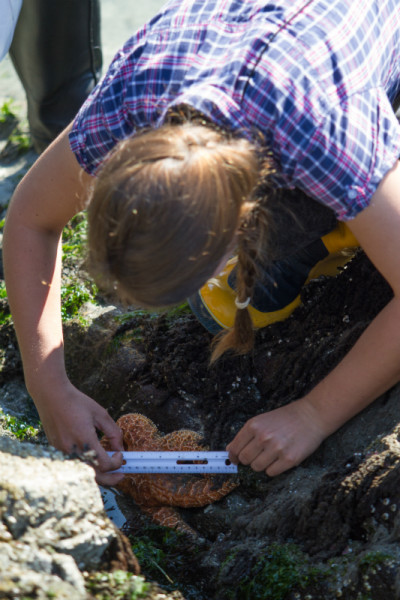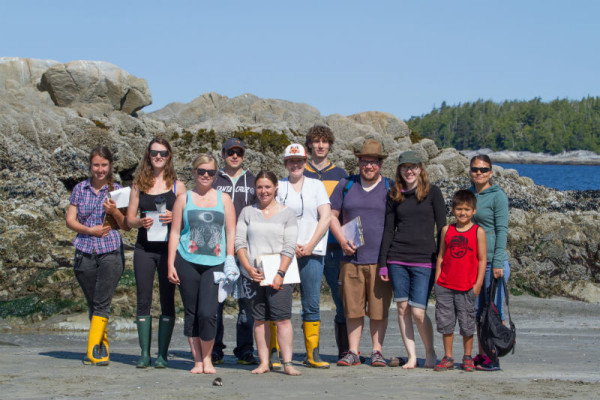Reaching for the (sea) stars
Sea stars (also known as starfish) are as common to British Columbia’s coasts as mosquitos are to summer. They speckle shorelines from California to Alaska. Often found in tidal pools or the rocky intertidal zone, some species can grow to be 24 cm large.

While these colourful marine life forms have been a common and popular sight in the past, in 2013 beach-goers and researchers alike started noticing sea stars with missing or damaged arms. The Sea Star Wasting Disease has since been found in over 20 species of sea stars, throughout their Pacific coast range. Although the disease has been present for some time, a die off of this magnitude has never been recorded. Researchers are working to gain a better understanding of this event and how the disease is spread. And Strawberry Isle Marine Research Society, and the communities around Clayoquot Sound, are helping.
Strawberry Isle Marine Research Society (SIMRS) is based in Clayoquot Sound and is dedicated to marine monitoring. Working in partnership with whale watching companies, water taxis and fish harvesters, they monitor Bigg’s Transient orca, sea otter, sea lion, eelgrass, ghost shrimp and the kelp canopy. They even help tangled and distressed mammals when possible. Noticing the diseased sea stars in their region, they decided to monitor various sites for the disease.
With the support of a WWF Go Wild Community Grant, and in partnership with the Ucluelet Aquarium, the research society initiated a monitoring project that uses volunteers to identify and track healthy and diseased sea stars in their region. Their data is shared with the University of California, Santa Cruz (UCSC), who is leading a collaboration of many organizations to create an international map of the disease that will contribute to further knowledge of the issue.
For the past three months, 23 volunteers have donated over 100 hours of work to measure 1500 sea stars. The surveys involve finding the stars in the intertidal zone, identifying the star species, getting a radial measurement, and assessing the health of the individual all based on the methods from USCS. While there are over 20 sea star species in the region, they are mostly finding ochre stars, bat stars, leather stars and very small sunflower stars. So far, they have seen signs of the disease – including lesions and missing rays (or arms) – but they’ve also seen many healthy stars.

While the main purpose of this project is to conduct research to get a better idea of the extent and severity of the disease in the local area and the population make up, the research society is also keen to encourage public participation in conservation. They know that the more people are involved in conservation, the more they understand, and the more pride they feel in protecting the environment.
Jessica Edwards, the research assistant at Strawberry Isle Marine Research Society, says “The volunteers are inspiring. They are making incredible observations and asking amazing questions, not to mention getting up early with the low tide. Many work in the eco-tourism industry and are taking the information and sharing their new knowledge about species and the intertidal zone with their friends, families and clients.”

The research society is hosting one more public survey this summer on August 30th. If you’re in the area, get in touch to find out more about getting involved: [email protected].
Have an idea of your own to get people involved in conservation? Fall applications open November 3, 2015.

